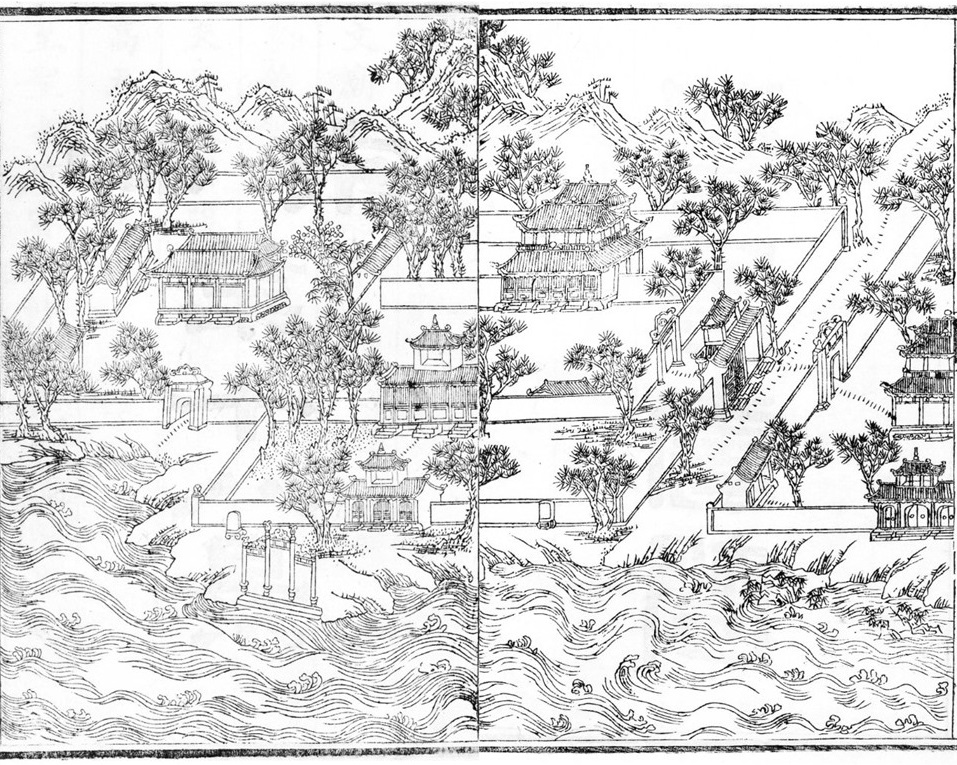HISTORY AND ARCHITECTURE OF QUOC TU GIAM (HUE)
In August 1803, after the reunification of the country, Emperor Gia Long built a national school called Doc Hoc Duong (or Quoc Hoc Duong) in An Ninh Thuong, Huong Tra district, about 5km from the Citadel (now located in An Binh village, adjacent to Long Ho Ha village, Huong Tra district). The school is located next to the Temple of Literature, facing the Huong River, so the scenery is very charming.
In March 1820, Emperor Minh Mang changed the name of the school to Quoc Tu Giam and this name existed until 1945 when Quoc Tu Giam school ended its role with the end of the Nguyen Dynasty.
Under Emperor Gia Long, the architectural scale of the school was small, consisting of only one main building in the middle and two rows of buildings on either side, used as a place for the Chief Minister and Deputy Chief of Education to teach. King Minh Mang, the scale of the school was larger. In 1821, the king set up Di Luan Duong, a lecture hall and two rows of classrooms on either side of the building, each row of 19 classrooms, as a place for students to read and do homework. By the beginning of the Tu Duc period, Quoc Tu Giam was quite large, but the school continued to be expanded and built. In 1848, a nine-block building was built, surrounded by brick walls and two dormitories, each with two spaces for students. The school also opened two small doors for students to enter and exit.
In 1854, during a visit to Tu Duc school, he made a text and a 14-chapter poem to teach and encourage students to study. All this work was carved into a large stone stela, erected in front of the schoolyard. Later, Quoc Tu Giam school was repeatedly damaged by natural disasters, especially the storm in Giap Thin year (1904). But after each damage, the school was restored.

"Huynh Tu Thu Thanh" (the scene of Quoc Tu Giam) is one of the 20 ancient landscapes of the land of ancient Capital
By 1908, in the reign of Duy Tan emperor, Quoc Tu Giam was moved to the inner capital, outside, southeast of the Imperial Citadel (i.e. the current location at 23 August Street, inside Hue Citadel) to facilitate the inspection of the mandarins, and even the king himself when he wanted to visit or hold examinations as well as ceremonies or Thi Hoc ceremony. The scale of the school at that time included: in the middle is the Di Luan Duong; on the two sides are two classrooms; in front are two student dormitories; behind the school, in the middle is the Tan Tho Vien, on the two sides is the house of Te Tu and Tu Nghiep officials (principal and vice-principal) and other school officials. Among these architectural works, Di Luan Duong, Tan Tho Vien and the building for Te Tuu of Quoc Tu Giam are traditional-style wooden architectural works with high artistic value (Tan Tho Vien, Di Luan Duong are derived from the architectural works of Bao Dinh Palace).
In 1923, the Tan Tho Vien became Khai Dinh Museum (Musée Khai Dinh, now Hue Palace Museum of Antiquities), so Quoc Tu Giam School had to set up a new library called Bao Dai Library at the back of Di Luan Duong. From then until August 1945, when Quoc Tu Giam ended its historical role, the school's architecture hardly changed.